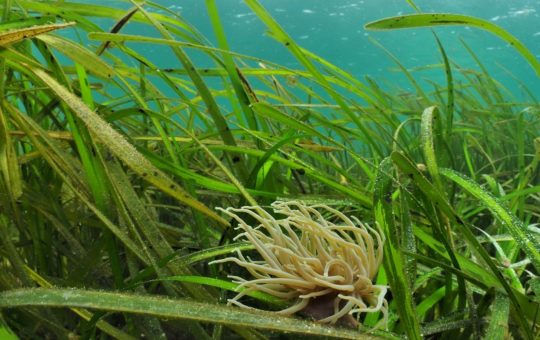
Recent efforts to restore seagrass habitats along the UK’s South Coast highlight a growing recognition of their critical role in marine ecosystems. Once widespread, seagrass meadows have faced decline due to pollution, coastal development, and climate change. However, emerging research and targeted restoration projects are now aiming to reverse this trend, emphasizing the importance of scientific evidence and collaborative action.
Understanding the Significance of Seagrass Habitats
Seagrass beds are among the most valuable underwater habitats, often described as the “lungs of the sea.” These lush, ribbon-like plants thrive in shallow coastal waters and provide numerous ecological, economic, and climate-related benefits. They serve as breeding grounds and shelter for a diverse range of marine species, including seahorses, crabs, and small sharks, supporting biodiversity hotspots. Additionally, seagrasses are potent carbon sinks, capable of storing vast amounts of CO₂ in their roots and surrounding sediments, playing a vital role in climate mitigation.
Recent Developments in Seagrass Restoration in the UK
Over the past few years, the UK has witnessed a resurgence of seagrass beds in regions such as Devon and Cornwall. The discovery of extensive seagrass meadows on the southern coasts underscores their ecological importance. Recognizing this, organizations including South West Water, the University of Exeter, Plymouth Marine Laboratory, and the Ocean Conservation Trust have launched collaborative projects to assess and support seagrass recovery.
For example, South West Water’s investment in infrastructure improvements and catchment management aims to reduce pollutants like agricultural runoff and nutrients in treated wastewater—key factors impacting water quality and seagrass health. These initiatives align with environmental research goals to understand how such measures influence marine habitat resilience.
University of Exeter’s Role in Seagrass Research and Restoration
The University of Exeter’s Centre for Resilience in Environment, Water and Waste (CREWW) leads much of this investigative work. Dr. Chris Laing, a prominent researcher in marine ecology, emphasizes the importance of understanding how human activities—particularly wastewater management—affect coastal habitats. His team’s research focuses on evaluating the impact of infrastructure upgrades and catchment schemes designed to reduce pollution levels.
By mapping seagrass beds and analyzing water quality data, Exeter’s researchers aim to identify successful strategies for habitat restoration. Their insights help inform not only local policies but also contribute to broader understanding of marine ecosystem recovery on a national scale.
How Human Activities Influence Seagrass Ecosystems
Human-induced factors such as nutrient runoff from agriculture, urban development, and wastewater discharge have historically hindered seagrass growth. Excess nutrients promote algal blooms, which block sunlight necessary for seagrass photosynthesis, while pollutants can directly degrade habitat quality. Restoring seagrass therefore involves addressing these issues by improving wastewater treatment processes, promoting sustainable farming practices, and implementing catchment management schemes.
The Role of Infrastructure Upgrades and Pollution Reduction
Recent investments in ‘Upstream Thinking’ initiatives aim to reduce diffuse pollution at its source. These schemes work with local farmers to minimize nutrient runoff, while infrastructure upgrades improve the quality of discharged water. Early signs suggest these measures positively influence seagrass recovery, but ongoing research is essential to establish definitive links and optimize strategies.
The Future of Seagrass Restoration and Its Broader Impact
Advancing seagrass restoration requires combining scientific research with practical conservation efforts. The ongoing projects led by Exeter and partners are exploring options such as manual planting, seed dispersal, and habitat protection measures. These efforts help rebuild ecological stability while also contributing to climate goals by enhancing carbon sequestration.
Furthermore, mapping the benefits of infrastructure upgrades and pollution reductions provides valuable data to inform future policies. This integrated approach encourages collaboration among water companies, environmental agencies, scientists, and local communities to ensure sustainable coastal management.
Implications for Climate Change and Biodiversity
Given their high carbon storage capacity, healthy seagrass beds contribute significantly to national and global climate strategies. Restoring these habitats not only aids in carbon offsetting but also enhances coastal resilience against erosion and storm surges. Protecting and expanding seagrass meadows is therefore a multifaceted investment in environmental health, economic stability, and climate mitigation.
Take Action and Stay Informed
For stakeholders, policymakers, and communities interested in supporting marine ecosystem recovery, staying informed about ongoing research and conservation projects is vital. Initiatives like those led by the University of Exeter help build a comprehensive understanding of what works in seagrass restoration, enabling more effective interventions.
Explore how collaborations between scientific research and practical management can benefit local and global marine health. If you are passionate about environmental conservation, consider engaging with local initiatives or supporting policies aimed at reducing pollution and protecting coastal habitats.
Conclusion: Supporting Marine Ecosystem Recovery
The recovery of seagrass beds in the UK signals a positive shift toward healthier coastal environments. By integrating cutting-edge research, infrastructure upgrades, and conservation efforts, organizations like the University of Exeter and its partners are paving the way for sustained marine resilience. Continued investment, research, and collaboration are essential to preserve these vital ecosystems for future generations.

